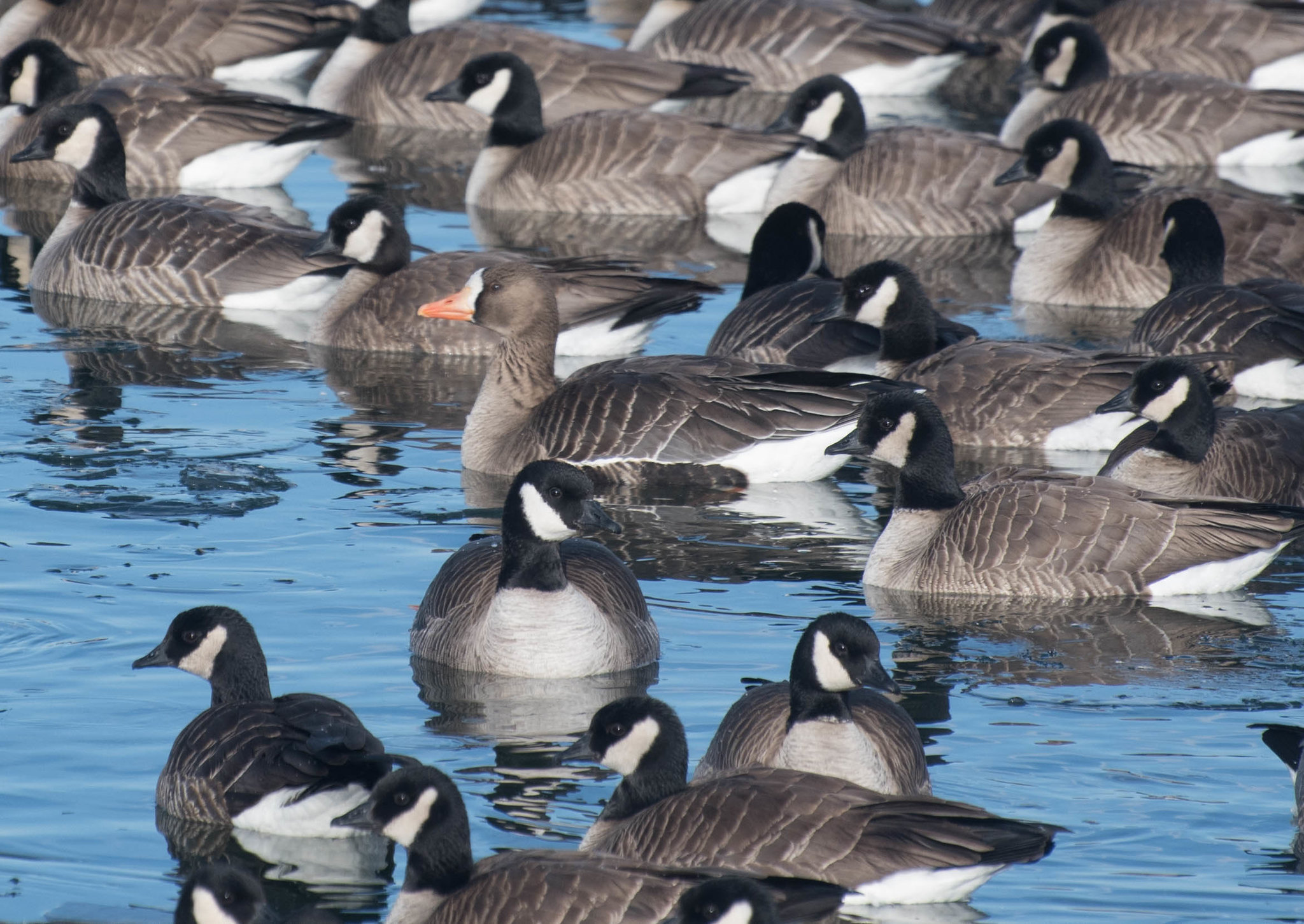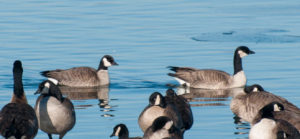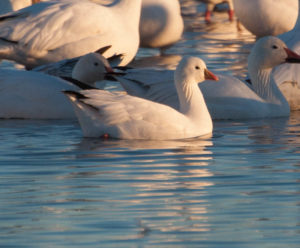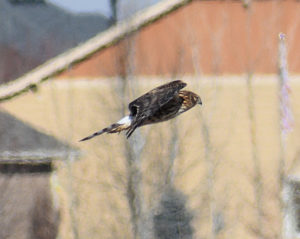
Milavec Reservoir in Frederick, CO is one of the best places along the Front Range to see all the possible (read: non-rare) interior goose species. Sometimes, like last year, it even plays host to some rarities like the Colorado-record Pink-footed Goose and Barnacle Goose. As hoped for, while we didn’t see any Colorado-record geese on this frigid, but sunny, Saturday morning, we did see all the usual goose suspects. We also had some great ducks and raptors.
Nearly all Coloradans are familiar with our only breeding goose species, the Canada Goose, but winter brings migrant Cackling, Greater White-fronted, Ross’s, and Snow Geese from the arctic to our lakes, reservoirs, and fields. The most similar to the Canada Goose, the Cackling Goose was only recognized as a species in its own right in 2004. There are 4 subspecies of Cackling Goose varying in size and color, but some of the common characteristics include smaller body size than the majority of Canada Geese (there may be some overlap with the smallest subspecies of Canada Goose), a shorter neck, and a bill that looks “stubby” because of a more rounded or square head shape. Because of the difficulty of distinguishing between the smallest subspecies of Canada Goose and the largest subspecies of Cackling Goose, small white-cheeked geese are sometimes referred to as “Cackling-ish.”
Like the Canada Goose, the Snow Goose also has a “mini-me” doppleganger, the Ross’s Goose, but that doppleganger is much easier to pick out than the Cackling Goose. Firstly, Snow Geese come in either the expected white plumage with black wingtips or a darker, grey-blue body plumage with white head and neck. Both have pink bills and feet as adults. The latter is sometimes referred to as a “blue goose, “blue morph,” or “blue phase” Snow Goose. There are only 2 subspecies of Snow Goose, but both have a black “grin patch” that gives them a sneering appearance, and a sloping forehead. By contrast, the Ross’s Goose, which is usually white but also occurs rarely in a blue phase, has a steep forehead leading to a rounded crown and lacks the grin patch.
The final expected goose species in Colorado is the Greater White-fronted Goose. This goose is mostly brownish-grey with darker belly bands, orange legs and bill, and white feathers around the base of the bill from which is gets its name.
Other stand-out species were 2 adult Bald Eagles, a Northern Harrier, a Red-breasted Merganser, a female Canvasback, and even a coyote. Not bad for a cold, January morning!
Frederick Lake (Milavec Reservoir) & Recreation Area, Jan 11, 2020
25 species
8 Snow Goose
3 Ross’s Goose
1 Greater White-fronted Goose
2000 Cackling Goose
4000 Canada Goose
60 Northern Shoveler
10 Mallard
1 Canvasback
7 Lesser Scaup
3 Bufflehead
20 Common Goldeneye
7 Common Merganser
1 Red-breasted Merganser
1 Ruddy Duck
3 American Coot
1 Northern Harrier
2 Bald Eagle
1 Red-tailed Hawk
1 American Kestrel
1 Blue Jay
6 European Starling
6 American Tree Sparrow
1 White-crowned Sparrow (Gambel’s)
2 Song Sparrow
1 Red-winged Blackbird




